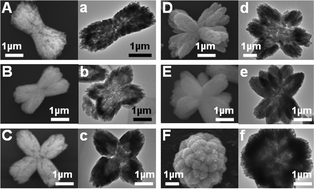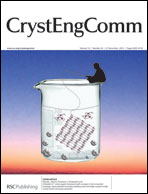Here, hierarchical hollow barium carbonate (BaCO3) with different sizes and morphologies can be obtained by a simple one-pot approach in the presence of soluble starch. Instead of dendritic crystals obtained without soluble starch, the morphology with hierarchical hollow BaCO3 superstructure can be systematically changed from shuttle-like to cauliflower-like with the reaction time. In addition, the highly effective additive also acts as a crystal size-controlled modifier over a range of concentrations. Detailed analysis of the crystal substructures with field-emission scanning electron microscope (FESEM), transmission electron microscopy (TEM) and high-resolution transmission electron microscopy (HRTEM) disclose that the hierarchical hollow shuttle-like BaCO3 superstructures are firstly synthesized by self-assembly and Ostwald ripening process. Then, the fractal splitting mechanism is adopted to introduce the synthesis of the hierarchical hollow BaCO3 crystals with different morphologies at the different reaction time. Our present work not only provides a method to fabricate the different morphologies and sizes of BaCO3 particles with hollow superstructures, which can be used in many industrial applications, but also sheds light on the Ostwald ripening and the fractal splitting mechanism of biomimetic mineralization induced by organic additives.

You have access to this article
 Please wait while we load your content...
Something went wrong. Try again?
Please wait while we load your content...
Something went wrong. Try again?


 Please wait while we load your content...
Please wait while we load your content...